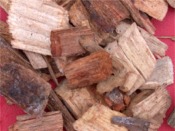|
|
|
|
| Dr. Harold Burdsall is a career research mycologist specializing in the taxonomy (classification) and biology of wood decay fungi. He also has extensive experience working with molds, rusts, mushrooms and ecological interactions. | ||
|
|
||
| His expertise and experience are invaluable resources for those faced with questions or issues rooted in mycology. See Dr. Burdsall's professional summary and professional bio for specifics regarding his credentials and experience. | ||
|
Xeromphalina kauffmanii - a wood decay fungus on oak |
||
|
|
||
 |
Identification of fungal species is critical to understanding and predicting their impacts on humans and the environment. Species that are related possess similar traits and by knowing the name of a fungus species, its characteristics and how it will act in particular situations (their biology and ecology) can be predicted. | |
| Some species cause disease, others break down wood (decay) or debris in the soil. Still others develop an association with root tips of plants (about 95% of tree species depend on these mycorrhizal associations). Certain genera of fungi are known to produce allergic reactions in humans; others produce toxins. | ||
|
Pycnoporus
cinnabarinus - |
||
|
|
||
| Burdsall is an expert on the fungi that cause root-rot, butt-rot and heart-rot fungi on living trees in order to predict the potential of the tree's falling, limbs breaking off or other tree failure. Knowing the species involved in the decay allows him to judge the seriousness of the decay with regard to the threat to people and/or structures by hazard trees. He also identifies fungi that decay logs and woody debris in the forest. These fungi are the recycling agents of woody debris in the forest. |
 |
|

|
Armillaria ostoyae causing a root |
|
| Many of the wood-decay species show promise for use in commercial processes, such as biologically assisted pulping of wood (energy savings and less polluting) or to break down chemical contaminants in soils. Identification of these species is necessary to be able to recognize the proper species for specific application. | ||
|
Brown-rot in a hardwood log |
||
|
|
 |
|
| The most serious threat to wood structures is decay by fungi. Dr. Burdsall can identify specific fungi that decay wood structures and other wood in use. Water intrusion from any source and lack of maintenance predisposes the wood to decay by providing a conducive environment. Without moisture, decay cannot continue. | ||
| In contrast, mildew is much less dependent on moisture. It is superficial and unsightly rather than destructive. | ||
|
Incipient decay in a wall stud |
||
|
|
||
|
|
Dr. Burdsall has extensive experience in the study of fungi infesting wood chips. Wood chips, when harvested and processed, are moist and usually high in nutrients of use to fungi. Their surfaces are well suited to the growth of molds and other wood inhabiting fungi. | |
| Molds are of concern because of allergies and other potential medical problems but the other fungi, especially the blue stain fungi, are of concern to forest pathologists. Their concern is that forest pathogens may be imported on wood chips and invade forests of the USA. As part of a preventative project, Burdsall has been active in identifying chip-associated fungi to determine what fungi are actually involved. | ||
|
|
||
| Qualified to investigate molds and air quality, Burdsall is experienced in sampling and identifying molds on a variety of substrates (fabrics, processed wood products and wall board) or from air samples. |
 |
|
| Molds are suspected causes of allergic reactions and some may contain toxic chemicals in sufficient concentrations to be problematic for humans. | ||
|
Cladisporium on walls of damp room |
||
|
|
||
| Dr. Burdsall's academic credentials and internationally renowned research provide invaluable credibility as an expert witness for litigation. He has considerable experience working with attorneys on cases involving fungal biology and decay. |
|
|
| Many years of teaching at various academic levels and to the public qualify Dr. Burdsall to offer a variety of presentations on many different aspects of mycology. |

